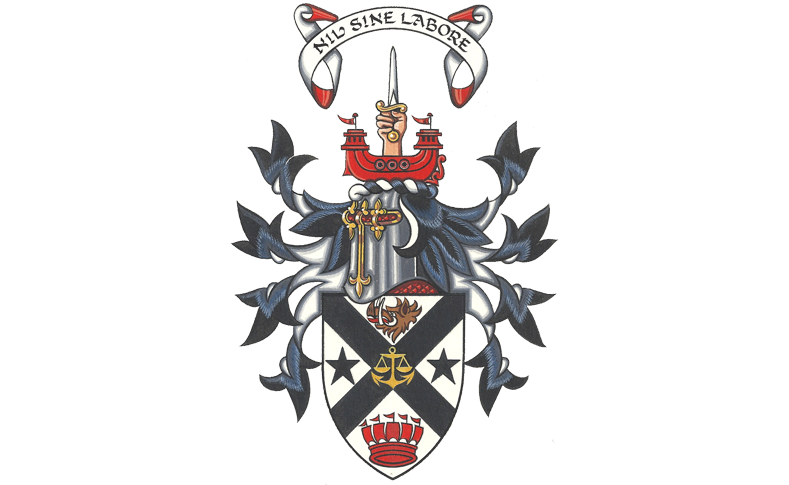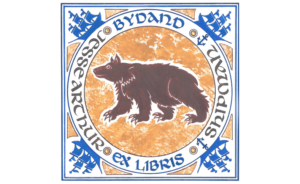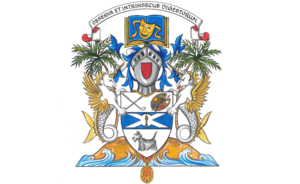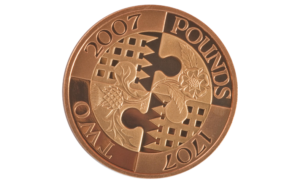The Arms are based on ‘Williamson’ Arms in Scotland. That is to say the Shield has a saltire, a boar’s head and stars or mullets.
The other elements reflect an association with the sea and maritime law namely the ship as a Crest with its sword, the anchor, the balance pans and the mercantile crown on the Shield.
Again, the viewer can tell that the armiger is a feudal baron by the steel helmet with 3 golden grilles above the Shield. The term armiger is used to describe someone who has petitioned successfully for a Grant of Arms.

Motto: a word or more upon a scroll
which in Scotland is usually shown above the crest. Sometimes, in Scotland, a Coat of Arms will show a Motto both above and below the Shield.
Crest: a figure, animal, plant or object affixed to the Helmet. Nowadays, Crests tend to reflect the occupation, hobbies or interests of the Petitioner. It is not necessary to have a crest on a Coat of Arms.
Wreath: a twisted band composed of the two principal colours shown on the Shield. This band holds the Mantle securely onto the top of the Helm.
Mantle: a covering that flows from the Helmet. This covering was used by Crusaders journeying to hot climates to shade their armour from the sun. In battle, it inevitably became torn. Over the Centuries, artists have been very keen to use these torn edges in order to create ornate designs.
Helmet: the covering for protection of the head.
Shield: a device for protection bearing ornamentation for identification. The Shield is the principal element in a Coat of Arms.










